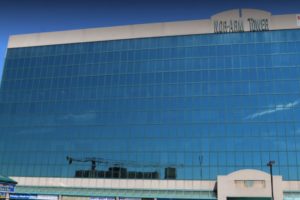Bankruptcy after divorce
The break-up of a marriage or common-law relationship has certain financial ramifications for both parties, including the splitting of assets and the creation of equalization payments (support).
However, both can be financially draining on one partner (and sometimes both) and could lead to bankruptcy.
So, what happens if one of the “exes” does file for bankruptcy as a result of financial hardship following the breakdown of the relationship?
Bankruptcy basically results in the liquidation of property (houses, cars, RRSPs, etc.) in order to pay off a portion of the outstanding debt (mortgages, loans, credit cards, taxes owing, etc.).
In the event of a bankruptcy following a divorce, the equalization payment also becomes an outstanding debt and the spouse being “supported” will have to settle for a reduced payment according to the bankruptcy payment agreement. However, spousal support does get preferred status in the bankruptcy’s payment distribution schedule, meaning it takes priority over other creditors such as credit cards and the amount outstanding is still payable after the claimant is discharged from bankruptcy.
So, in a nutshell, say John is supposed to pay Jane $1,000 a month for support and owes her $15,000 in back support. The trustee rules that over the course of his bankruptcy, John will pay back the $12,000 owed in the year prior to bankruptcy in addition to a percentage on the outstanding $3,000, and when he is discharged from bankruptcy, John still has to pay Jane the outstanding balance on the $15,000. Say John pays Jane $13,500 over the course of his bankruptcy; he still owes her $1,500 after he is discharged from bankruptcy. These are just examples for easy calculations and not indicative of actual payment schedules.
Now, the family home throws a wrench into the bankruptcy works. Under Canada’s Bankruptcy and Insolvency Act (“BIA”), the trustee liquidates the claimant’s assets to settle debts, but he can’t very well do that if the spouse with custody over the children is still living in the family home.
There are two solutions: force the sale of the family home in order for the bankruptcy claimant to realize his/her share of the asset’s value, or facilitate the sale of the claimant’s share in the home to the spouse receiving equalization payments. There are difficulties with either solution.
In the case of the former, provincial law may prevent the sale of the home due to the resultant financial hardship created for the child(ren)’s guardian, disruption of the child’s life, the availability of suitable alternative housing in the area of residence, the employability of the supported spouse (especially if he/she is required to stay at home to care for dependents), and even because of the history of the spouse and children in the family home.
Although preferable and perhaps an easier avenue toward asset liquidation, attempting to facilitate a sale between ex-spouses is dependent on the spouse taking possession of the house being able to secure suitable financing to purchase it. Again, that depends on the employability and financial stability of the spouse.
Either way, bankruptcy does make a difficult time more difficult for both parties in the separation but in the end, the bankrupt individual has a fresh start financially, and the supported spouse receives regular support payments (as opposed to the deadbeat’s “not at all”).



